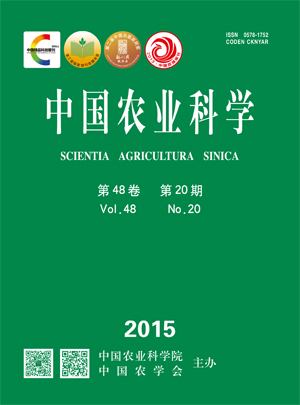-
Analysis of Aroma Components in Xihu Longjing Tea by Comprehensive Two-Dimensional Gas Chromatography- Time-of-Flight Mass Spectrometry
- ZHU Yin, YANG Ting, SHI Jiang, YU Fang-lin, DAI Wei-dong, TAN Jun-feng, GUO Li, ZHANG Yue, PENG Qun-hua, Lü Hai-peng, LIN Zhi
-
Scientia Agricultura Sinica. 2015, 48(20):
4120-4146.
doi:10.3864/j.issn.0578-1752.2015.20.013
-
 Abstract
(
780 )
Abstract
(
780 )
 HTML
(
18 )
HTML
(
18 )
 PDF (2032KB)
(
1881
)
PDF (2032KB)
(
1881
)
 Save
Save
-
References |
Related Articles |
Metrics
Aroma is one of the most important factors affecting the quality of tea, and identifying the chemical composition of tea aroma will enrich the basic theory of aroma chemistry of tea and establish an important theoretic ground to improve and enhance the aroma quality of tea. 【Method】 Aroma components of Xihu Longjing tea were analyzed by using a comprehensive two- dimensional gas chromatography-time-of-flight mass spectrometry (GC×GC-TOFMS) and gas chromatography-mass spectrometry (GC-MS), and the separating capacities of GC×GC-TOFMS and GC-MS were compared. Then, the qualitative and relative quantitative analyses of aroma components separated by GC×GC-TOFMS were carried out according to the standard mass spectra in available databases, retention time, structured chromatograms and peak areas. Furthermore, the characteristic aroma compositions of Xihu Longjing tea were discussed according to the odor characteristics of its compounds with relatively high contents (≥0.5%). 【Result】 GC×GC-TOFMS technique displayed the strong superiority on the separating capacity by comparing the total ion chromatograms and chromatographic peaks with GC-MS. A total of 522 common volatile components were identified with a good match, and then further classified into 20 types of compounds, such as enols, alkenes, amines, alkanes, aldehydes, olefin aldehydes, ethers, alcohols, esters, lactones, allyl esters, ketenes, ketones, phenols, organic acids, sulphur compounds, nitrogen heterocyclic compounds, oxygen heterocyclic compounds, aromatic hydrocarbons, and alkynes; and the largest numbers of aromatic hydrocarbons (77), large numbers of alkanes (50), alkenes (43), esters (43) and ketones (41), and the minimum numbers of alkynes (3) were included. Relative quantitative analysis showed that 50 volatile components, including 1-penten-3-ol, cis-hex-3-en-1-ol, linalool, α-terpineol, geraniol, butane, methylcyclopentane, 2,2,4,6,6-pentamethylheptane, dodecane, heneicosane, tetracosane, hentriacontane, acetaldehyde, pentanal, hexanal, furfural, heptanal, phenylacetaldehyde, nonanal, 1-ethoxypropane, 2-ethoxybutane, 1-ethoxybutane, 1,1-diethoxyethane, 1-ethoxypentane, pentanol, tert-butanol, benzyl alcohol, phenethyl alcohol, phytol, diisobutyl phthalate, dibutyl phthalate, ethyl 2-(5-methyl-5-vinyltetrahydrofuran-2-yl) propan-2-yl carbonate, (Z)-hex-3-en-1-yl hexanoate, methyl palmitate, acetoin, 2,4-di-tert-butylphenol, 3-methylbutanoic acid, nonanoic acid, hexadecanoic acid, linoleic acid, octadecanoic acid, dimethyl sulfoxide, benzothiazole, indole, caffeine, linalool oxide (pyranoid), 2,3-dihydrobenzofuran, ethylbenzene, phenylpropane, and 1-methylnaphthalene, were found to be relatively high contents in aroma components of Xihu Longjing tea, suggesting that they played an important role in effecting the aroma quality of Xihu Longjing tea. The analysis of characteristic aroma compositions indicated that enols, aldehydes, alcohols, esters and aromatic hydrocarbons with agreeable smell would be responsible for the outstanding aroma quality of Xihu Longjing tea, and the effects of alkanes, ethers, organic acids and sulphur compounds with no special smell or offensive odor and aroma compounds with low odor threshold values were also worth future research. 【Conclusion】 The successful application of GC×GC-TOFMS technology in tea aroma analysis has improved the number of identified compounds significantly, which could make up for the defects of GC-MS analysis to some extent and supply the advanced technical support for the future in-depth studies on the chemical composition of tea aroma and formation mechanism of tea aroma quality.









